Lofn ‘Matchmaker’ – Norse Goddess Of Forbidden Marriages Of People Who Wish To Be Loved And Search For Partners
A. Sutherland - AncientPages.com - In the Prose Edda book "Gylfaginning," an Icelandic historian, poet, and politician, Snorri Sturluson (1179-1241), described the goddess Lofn, who "let people live together, women and men, even if previously it was for them forbidden or considered illegal" to be together.
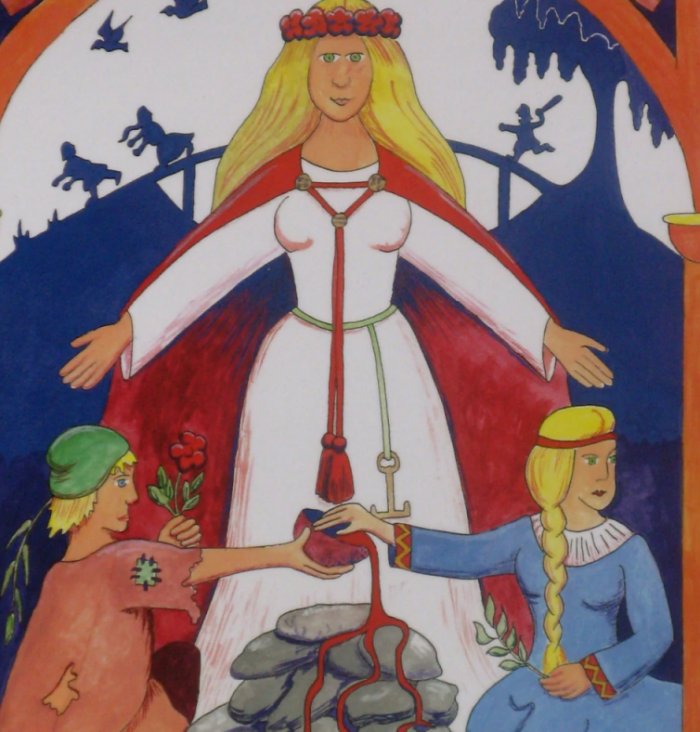 Goddess Lofn who arranges forbidden marriages in Norse mythology. source
Goddess Lofn who arranges forbidden marriages in Norse mythology. source
In Norse mythology, Lofn is a minor deity. Although not significant in the pantheon, she was essential to people who wished to be loved and searched for love and partners. Lofn was great support for those who desperately needed her help.
The goddess of passionate love, Lofn (also Lofna), whose name means 'love' or 'praise,' was a female of the Æsir gods. Lofn was one of the Asynjur of the goddess Frigg, Odin's wife and the goddess of love, marriage, and motherhood.
Frigg was the most prominent personality among the holy sisterhood of Asynjur.
Lofn was appreciated for her goodwill and kindness and was "good to pray to" when marriage was controversial. The gentle and gracious and good maiden Lofn had permission from Odin or Frigg to bring together men and women, no matter what difficulties may stand in their way. If there were any apparent obstacles, Lofn had the power to remove them.
The name "love" was associated with Lofn's name, and this name was much loved and respected by men and women who lived on Midgard (or Mannheim), one of the nine worlds of Yggdrasil, the sacred tree of life in Norse mythology.
Men and women who were not allowed to marry each other could rely on the divine Lofn, who in Snorri's catalog in "Gylfaginning" is listed as the eighth of 16 (or 14) Asynjur.
As we mentioned earlier, Lofn was only a minor goddess, but it does not mean she was not of value, especially to ordinary people. In Norse skaldic poetry of the 9th to the 13th century), Lofn's name was mentioned frequently.
According to Snorri, Asynjur represents a court around Frigg.
Then Snorri mentions: Saga, Eir, Fulla, Freja (also called Mardöll, Hörn, Gefn, Syr, and Vanadis), Sjöfn, Lofn, Vår, Vör, Syn, Hlin, Snotra, Gnå, Sol, Bil, Jord, and Rind.
Together with the Æsir gods and Vanir, the Asynjur form a large family in which everyone remains young thanks to the apples of Idun.
Freya belongs to the family of the Vanas, but she is the goddess who participates in most of the myths. Frigg is Odin's wife. Most of the Asynjur are very independent and have farms. However, they are all threatened by the coming disaster that Ragnarök entails.
Frigg is the first; she possesses the lordly dwelling called Fensaler.
Other Asynjur includes Saga ('a seeress'), probably another name for Frigg; Eir, a goddess of medicine and medical care; Gefjon, associated with plowing; Fulla, who carries Frigg's chest, takes care of her shoes and knows her secrets; the goddess Freya ranked with Frigg. Another attendant of Frigg is Sjöfn, who is fond of turning men's and women's hearts to love, and like Lofn, she also cares for marriages and matchmaking, but most probably, this goddess can be the goddess Frigg herself.
Among other Asynjur is the goddess Var, whose duty is to hear the oaths and troths that men and women plight each other. She takes vengeance on those who break their promises.
In Norse mythology, Vör (in Old Norse, possibly "the careful one") is a goddess associated with wisdom. Vör is also attested in the Prose Edda, among Frigg's Asynjur.
Meanwhile, Syn is the deity who guards the hall door and closes it against those who cannot enter. In trials, she is invoked when necessary by the defenders.
The goddess Hlin must guard those men whom Frigg wants to protect from any danger, while Snotra is the one who is wise and courtly. Another attendant is Gna, Frigg's envoy whom Frigg sends on her errands into various worlds. Snorri Sturluson's list also includes Skadi, the wife of Njord.
A few of the Asynjur are well-known in their own right, most of which can be found in various Norse myths.
Updated on March 25, 2023
Written by – A. Sutherland - AncientPages.com Senior Staff Writer
Copyright © AncientPages.com All rights reserved. This material may not be published, broadcast, rewritten or redistributed in whole or part without the express written permission of AncientPages.com
Expand for referencesReferences:
Lindow, John. Norse Mythology
Simek, Rudolf, Dictionary of Northern Mythology
Anderson R. B. Viking Tales of the North
More From Ancient Pages
-
 Strange Encounter With A Supernatural Being In The 1790s
Featured Stories | Jan 12, 2020
Strange Encounter With A Supernatural Being In The 1790s
Featured Stories | Jan 12, 2020 -
 Controversial Statue Of Anglo-Norman Knight William Marshal In Pembroke Faces Criticism
Artifacts | May 10, 2022
Controversial Statue Of Anglo-Norman Knight William Marshal In Pembroke Faces Criticism
Artifacts | May 10, 2022 -
 Forgotten Ancient Kingdom Of Tuwana Is Hidden Among Ruins In Cappadocia
Civilizations | Mar 12, 2016
Forgotten Ancient Kingdom Of Tuwana Is Hidden Among Ruins In Cappadocia
Civilizations | Mar 12, 2016 -
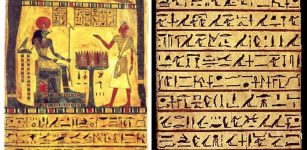 Strange History Of Stele Of Ankh-ef-en-Khonsu – ‘Stele Of Revealing’ Gave Birth To Thelema, A New Religion
Artifacts | Apr 3, 2018
Strange History Of Stele Of Ankh-ef-en-Khonsu – ‘Stele Of Revealing’ Gave Birth To Thelema, A New Religion
Artifacts | Apr 3, 2018 -
 Patara’s 2,400-Year-Old Ancient Kitchen And ‘Women’s Room’ Unearthed
Archaeology | Oct 7, 2020
Patara’s 2,400-Year-Old Ancient Kitchen And ‘Women’s Room’ Unearthed
Archaeology | Oct 7, 2020 -
 Gallic Leader Vercingetorix In Victorious Battle Of Gergovia, 52 BC
Featured Stories | Jan 23, 2017
Gallic Leader Vercingetorix In Victorious Battle Of Gergovia, 52 BC
Featured Stories | Jan 23, 2017 -
 Mysterious Death Of 20 Celts Who Died 2,000 Years Ago In The Three Lakes, Switzerland – Re-Examined
Archaeology | Jun 17, 2024
Mysterious Death Of 20 Celts Who Died 2,000 Years Ago In The Three Lakes, Switzerland – Re-Examined
Archaeology | Jun 17, 2024 -
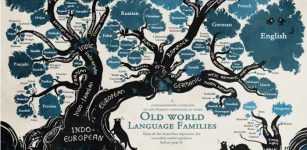 Riddle Of The Indo-European Language – Which Of The Two Hypotheses Is Correct?
Featured Stories | Oct 25, 2023
Riddle Of The Indo-European Language – Which Of The Two Hypotheses Is Correct?
Featured Stories | Oct 25, 2023 -
 New Study Challenges The Beginning Of Civilization
Archaeology | Apr 11, 2022
New Study Challenges The Beginning Of Civilization
Archaeology | Apr 11, 2022 -
 Pyramid Of Djoser May Have Been Constructed Using Hydraulic Lift Technology – Scientists Say
Archaeology | Aug 5, 2024
Pyramid Of Djoser May Have Been Constructed Using Hydraulic Lift Technology – Scientists Say
Archaeology | Aug 5, 2024 -
 On This Day In History: Bolsheviks Executed Aleksandr Kolchak, A Navy Officer And Explorer Of The Arctic – On Feb 7, 1920
News | Feb 7, 2017
On This Day In History: Bolsheviks Executed Aleksandr Kolchak, A Navy Officer And Explorer Of The Arctic – On Feb 7, 1920
News | Feb 7, 2017 -
 Why Napoleon’s Invasion Of Russia Was A Fiasco
Ancient History Facts | Mar 31, 2017
Why Napoleon’s Invasion Of Russia Was A Fiasco
Ancient History Facts | Mar 31, 2017 -
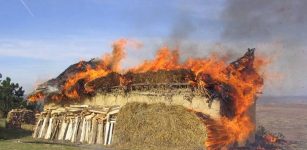 Mysterious Cucuteni-Tyrpillian Culture Burned Their Settlements For Unknown Reasons
Civilizations | Feb 12, 2021
Mysterious Cucuteni-Tyrpillian Culture Burned Their Settlements For Unknown Reasons
Civilizations | Feb 12, 2021 -
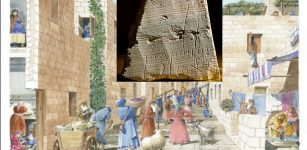 Who Was “Shimon”, Whose Name Appears On A 2,000-Year-old Hebrew Inscription?
Archaeology | May 20, 2023
Who Was “Shimon”, Whose Name Appears On A 2,000-Year-old Hebrew Inscription?
Archaeology | May 20, 2023 -
 Mirpur Jain Temple: Stunning Artwork Of Ancient Craftsmen Of India
Featured Stories | May 17, 2021
Mirpur Jain Temple: Stunning Artwork Of Ancient Craftsmen Of India
Featured Stories | May 17, 2021 -
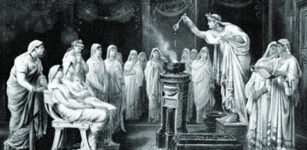 Ancient Romans Loved White Teeth – All Means Were Acceptable To Get Them Even Portuguese Urine
Ancient History Facts | Dec 10, 2017
Ancient Romans Loved White Teeth – All Means Were Acceptable To Get Them Even Portuguese Urine
Ancient History Facts | Dec 10, 2017 -
 Historic Shipwreck Margaret A. Muir Found In Lake Michigan, Wisconsin
Archaeology | Jul 29, 2024
Historic Shipwreck Margaret A. Muir Found In Lake Michigan, Wisconsin
Archaeology | Jul 29, 2024 -
 200,000-Year-Old Grass Bed Discovered In South Africa’s Border Cave
Archaeology | Aug 14, 2020
200,000-Year-Old Grass Bed Discovered In South Africa’s Border Cave
Archaeology | Aug 14, 2020 -
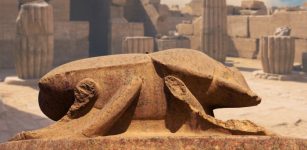 Secrets Of The Scarab – Ancient Sacred Symbol In Human History
Ancient Symbols | Jun 14, 2015
Secrets Of The Scarab – Ancient Sacred Symbol In Human History
Ancient Symbols | Jun 14, 2015 -
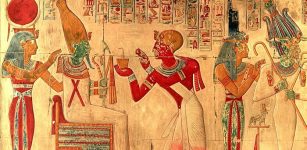 Osiris: Enigmatic And Powerful God In Ancient Egypt
Egyptian Mythology | Jun 13, 2017
Osiris: Enigmatic And Powerful God In Ancient Egypt
Egyptian Mythology | Jun 13, 2017
